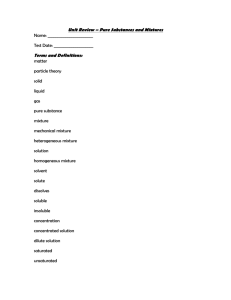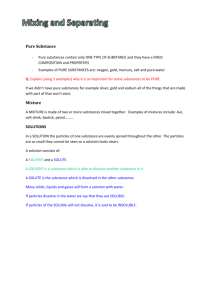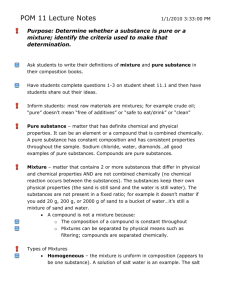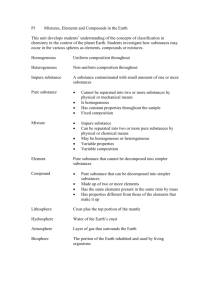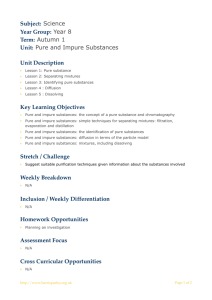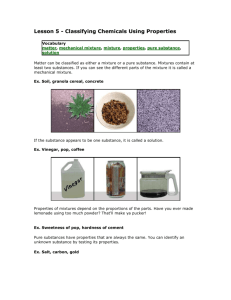Ch # 4 Notes
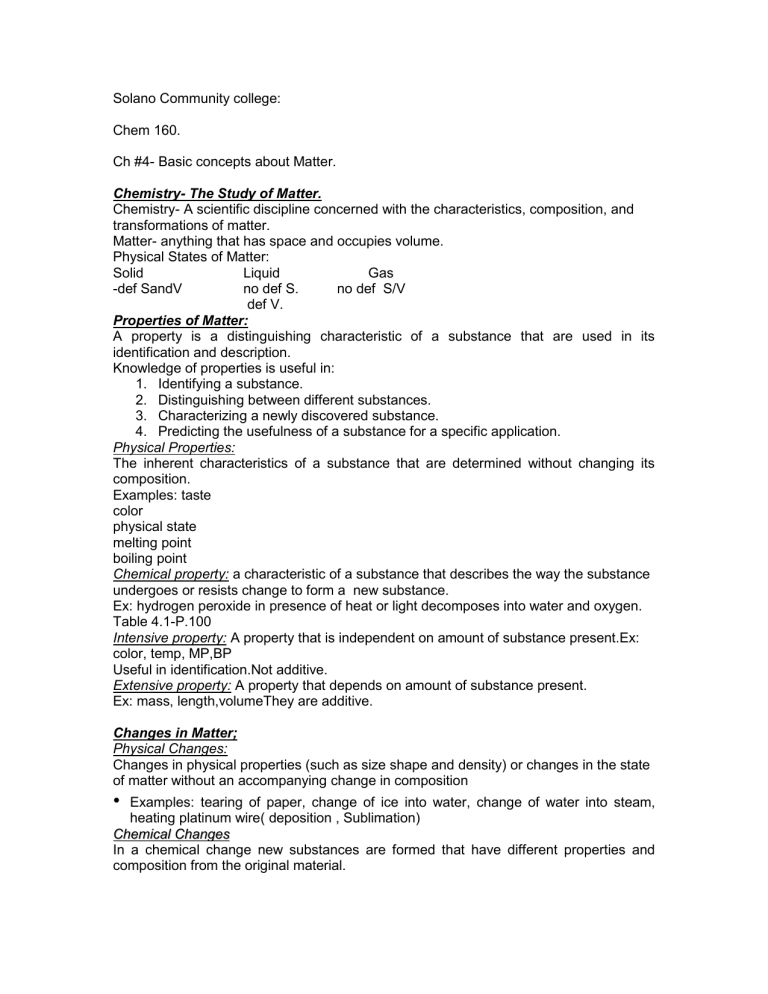
Solano Community college:
Chem 160.
Ch #4- Basic concepts about Matter.
Chemistry- The Study of Matter.
Chemistry- A scientific discipline concerned with the characteristics, composition, and transformations of matter.
Matter- anything that has space and occupies volume.
Physical States of Matter:
Solid Liquid Gas
-def SandV no def S. no def S/V
def V.
Properties of Matter:
A property is a distinguishing characteristic of a substance that are used in its identification and description.
Knowledge of properties is useful in:
1. Identifying a substance.
2. Distinguishing between different substances.
3. Characterizing a newly discovered substance.
4. Predicting the usefulness of a substance for a specific application.
Physical Properties:
The inherent characteristics of a substance that are determined without changing its composition.
Examples: taste color physical state melting point boiling point
Chemical property: a characteristic of a substance that describes the way the substance undergoes or resists change to form a new substance.
Ex: hydrogen peroxide in presence of heat or light decomposes into water and oxygen.
Table 4.1-P.100
Intensive property: A property that is independent on amount of substance present.Ex: color, temp, MP,BP
Useful in identification.Not additive.
Extensive property: A property that depends on amount of substance present.
Ex: mass, length,volumeThey are additive.
Changes in Matter;
Physical Changes:
Changes in physical properties (such as size shape and density) or changes in the state of matter without an accompanying change in composition
•
Examples: tearing of paper, change of ice into water, change of water into steam, heating platinum wire( deposition , Sublimation)
C h e m i i c a l l C h a n g e s
In a chemical change new substances are formed that have different properties and composition from the original material.
A Chemical Reaction: A process in which at least one new substance is produced as a result of a chemical change.
Table 4.2, P.102
Do Ex:4.1, P.103.
Pure Substances and Mixtures:
Pure substance: A single kind of matter that can not be separated into other kinds of matter using physical means. Ex: pure water, pure sucrose. They have a definite and constant composition.
Mixture: Physical combination of two or more pure substances in which each substance retains its own chemical identity :ex; salt and pepper. They have variable compositions.
They can be broken down by physical means. Table: 4.6.
Types of Mixtures:
Heterogeneous mixture; It contains two or more visually distinguishable parts , each of which has different properties. Ex: mix of sugar and sand, oil and vinegar,.
Homogenous mixture: A mixture that contains only one distinguishable phase, which has uniform properties throughout. ex: a sugar water mix, air, alloys. Fig. 4.8, table.
Types of Pure substances: elements and compounds.
Elements: Fundamental/Elementary substances that cannot be broken down by chemical means into simpler substances.
Compound: A pure substance that can be broken down into two or more simpler pure substances using chemical means. Ex: water.
Physical combination=mixture.
Chemical combination=compound.
Discovery and abundance of the Elements:
113 known elements.
88 occur naturally.25 are made in labs and are unstable and hence radioactive.
H is dominant in the Universe (91 %) Helium (9%)
O is dominant in Earth’s crust( 60.1%),silicon (20%)See fig 4.13.
Names and Chemical symbols of the Elements:
Chemical symbol: One or two letter designation for an element derived from the element’s name.Table.4.3.




